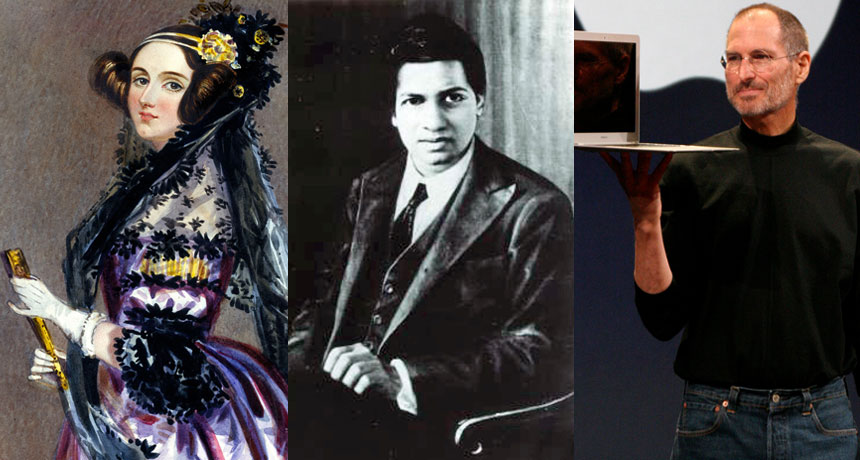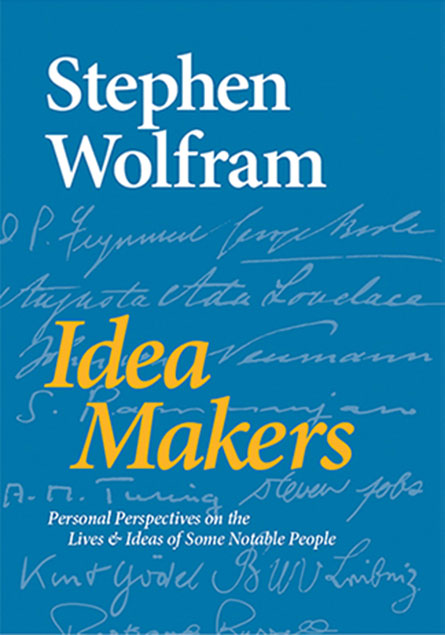‘Idea Makers’ tackles scientific thinkers’ big ideas and personal lives
Human side of science emphasized in new book

PROFILES IN SCIENCE Ada Lovelace, Srinivasa Ramanujan and Steve Jobs are a few of the prominent figures in science and technology featured in Stephen Wolfram’s latest book.
From left: SirHenryNorris/Wikimedia Commons; SpacemaSpiff/Wikimedia Commons; Magnus Manske/Wikimedia Commons (CC BY 3.0)








